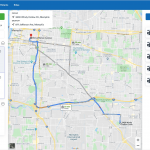M&A and investment within India’s healthcare sector are anticipated to persist robustly, potentially surging in specific segments. Notably, the sector has witnessed significant M&A activity totaling USD 35 billion from 2018 to 2022, marking a notable increase compared to the preceding five years. Key deals, like Torrent Pharma’s acquisition of Curatio Healthcare and Eris Lifesciences’ purchase of Oaknet Healthcare, reflect a trend of companies targeting strategic acquisitions to bolster portfolios. This growth trajectory extends to pharmaceuticals, healthcare services, Pharma B2B, and MedTech segments, indicating a continuous surge in consolidation, propelled by diverse factors such as market expansion, niche focus, and evolving consumer demands. Domestic companies, backed by robust balance sheets, are poised for further inorganic growth, while private equity interest remains high, especially in API segments. As the industry evolves towards outsourcing and specialty businesses, the quest for innovation, service integration, and global expansion fuels a landscape primed for sustained M&A activity, with both local and overseas players eyeing India’s burgeoning healthcare market.
M&A and investing activity in the Indian healthcare sector is likely to continue at strong levels and could potentially even increase in certain segments within the healthcare sector. The Indian healthcare sector has witnessed strong M&A activity with a cumulative deal value of USD 35 billion over the 2018-2022 period. This marks a healthy increase in terms of deal value over the preceding 5-year period.
Pharmaceuticals continue to witness strong deal activity
Large Indian domestic companies are doubling down on the Indian market driven by a desire to enhance presence, plug specific whitespaces from a therapy area standpoint and accelerate beyond organic growth.
Want to publish your own articles on DistilINFO Publications?
Send us an email, we will get in touch with you.
Some key deals include Torrent Pharma’s acquisition of Curatio Healthcare, Eris Lifesciences’ acquisition of Oaknet Healthcare and Mankind Pharma’s acquisition of Panacea Biotech’s domestic formulation brands.
Several of the strategic transactions have been in the form of brand acquisitions to fill specific portfolio gaps and strengthen specific divisions. Several of the larger domestic formulation companies are looking to focus on core portfolio and sharpen capital/resource allocation decisions. This in turn has also resulted in companies divesting select non-core brands, a trend that is likely to continue.
Most large Indian pharma companies enjoy a healthy balance sheet, providing the ammunition to fund inorganic growth. This coupled with the fact that there are limited avenues for inorganic capital deployment (with similar risk-reward dynamics) implies that domestic M&A activity is expected to continue going forward.
There has also been a fair amount of private equity (PE) activity in the Indian domestic formulations space, including Advent’s acquisition of Bharat Serums and Vaccines, KKR’s acquisition of controlling stake in J.B. Chemicals & Pharmaceuticals and Temasek’s investment in Integrace Health.
Pharma B2B has been another area with consistent M&A activity, especially in the Active Pharmaceutical Ingredient (API) segment driven both by PE funds and corporates. The industry has been and continues to be fragmented, providing the opportunity for consolidation. PE activity has been led by funds looking to do platform investments and subsequent bolt-on acquisitions to acquire capabilities and scale up.
Trade activity has been primarily driven by a desire to expand in high growth segments such as HPAPI, oncology, peptides and injectables. Given the supply chain disruptions faced during Covid, there is a greater realisation of the need to diversify the supply chain and avoid over reliance on one country/source.
Outside of China, India and Italy are two of the major API manufacturing hubs, which is expected to further fuel the demand for APIs from India. This could also drive inbound activity with overseas companies looking to acquire assets, especially those with strong regulatory track record, meaningful regulated markets exposure and presence in high-growth and niche areas.
The Pharma B2B industry continues to benefit from a structural move from customers to increasingly outsource manufacturing activities and shift towards an asset-light business model driven by cost pressure, the desire to migrate from a fixed to a variable cost structure and supply chain complexity.
In addition, there has been a growing share of mid and small pharma companies in the late-stage pipeline, which bodes well for continued growth in outsourcing, as several mid and small pharma companies rely on outsourcing to meet their manufacturing requirements. Also, there seems to be rising demand from customers for integrated service offerings, which would further drive consolidators to fill gaps in service offerings through acquisitions.
Some of the larger Indian diversified generics majors are also keen on scaling up specialty businesses, especially in the US, through acquisitions and/or in-licensing, and moving up the value chain. This trend is likely to continue as select companies continue to build a portfolio of innovative branded specialty products and biosimilars.
Furthermore, Nutraceutical ingredients has witnessed recent M&A activity in India with transactions such as Novozymes’ acquisition of majority stake in Synergia Life Sciences and TA Associates’ investment in OmniActive Health Technologies.
Several Indian nutraceutical ingredients companies cater to a global customer base, a large and growing opportunity driven by rising consumer awareness and a shift towards preventive care. The space is witnessing interest from global strategics as well as PE funds.
Several global ingredients companies have historically been quite acquisitive, enjoy strong valuations and have healthy balance sheets (with low leverage levels). This area could witness meaningful inbound M&A activity with overseas companies looking to acquire assets in India to gain access to niche/high growth product portfolio, expand manufacturing base and drive revenue synergies.
Healthcare services witnessed strong deal activity from both trade buyers as well as PE funds
Indian healthcare services space has witnessed meaningful transactions recently, including Temasek increasing its stake in Manipal Hospitals and Ontario Teachers’ Pension Plan’s acquisition of majority stake in Sahyadri Hospitals.
Given the level of fragmentation that exists in the Indian hospitals’ sector (with the top 10 corporate hospital chains estimated to account for less than 3 per cent of total hospital beds in India), it is likely that the space will continue to witness consolidation with the larger chains acquiring smaller assets to expand geographic footprint as well as strengthen presence in existing regions. This has been evident through recent strategic activity including Manipal’s acquisition of Vikram Hospitals and KIMS Hospitals’ acquisition of Sunshine Hospitals.
There has also been an increasing interest in single specialty space as the segment matures, assets grow in scale and demonstrate strong unit economics. Several PE investors have invested in single specialty chains with focused segments being mother & childcare, IVF and eyecare.
This has been apparent through a slew of recent transactions including GIC’s investment in Asia Healthcare Holdings, TPG Growth’s investment in Dr. Agarwal’s, and Kedaara Capital’s investment in Oasis Fertility.
Rise in PE activity in the medical technology/medical devices segment
With relatively lower levels of M&A activity historically (compared to pharmaceuticals and healthcare services), M&A in the Indian MedTech space has historically been focused on consumables and in-vitro diagnostics (IVD) segments.
However, with companies scaling up, there is a rise in interest from financial sponsors. Select transactions include Apax Partners’ acquisition of Healthium MedTech, Temasek’s investment in Molbio Diagnostics and Warburg Pincus’ investment in Meril.
Inbound trade M&A activity in the MedTech space in India could rise as select overseas companies look to expand their footprint and get access to commercial infrastructure in India along with the ability to cater to other markets from India. Select outbound acquisitions are also expected as some of the larger Indian MedTech companies look at acquiring specific product / technology capabilities.
In summary, overall deal activity in the Indian healthcare sector is likely to continue at strong levels and could potentially even increase in certain segments.
Source: EconomicTimes








